Inbox and Environment News: Issue 366
July 1 - 7, 2018: Issue 366
PNHA Careel Creek Planting Day - June 2018
Stroll through the walkway between the end of Joseph and John St Avalon to see what we planted yesterday (Sunday June 24). This formerly weedy place will soon be natural vegetation again - estuary-edge native plants, with some shrubs on the higher ground. Thanks very much to our volunteers and to the neighbour for letting us use water to get the plants off to a good start. Karin NIppard NB Council Bushland Manager supervised the work for this grant funded event. 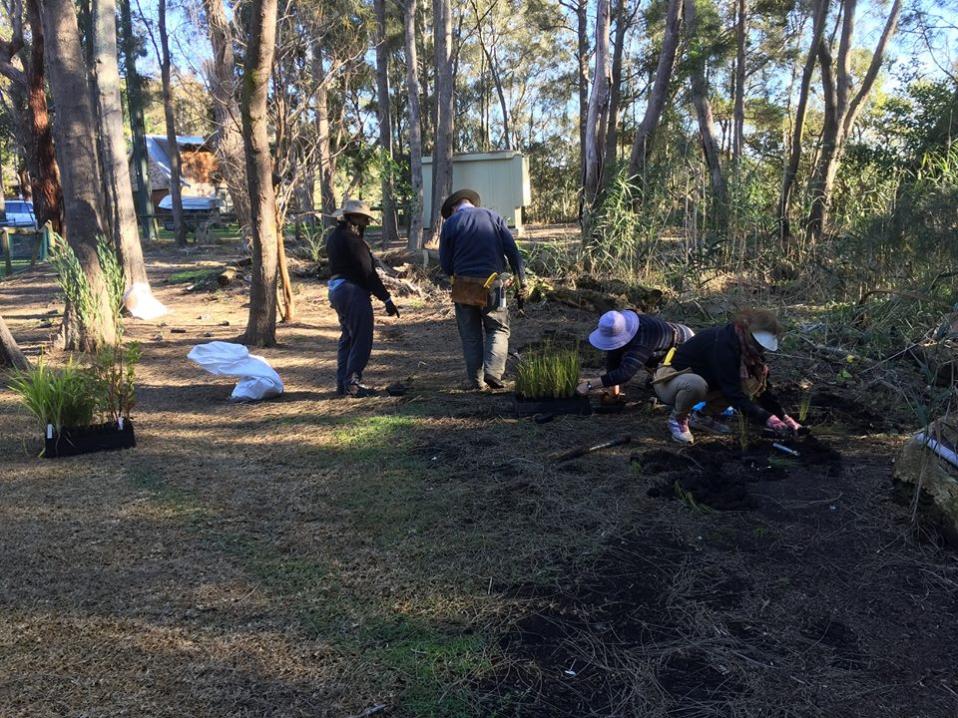 This volunteer was really determined to get cigarette butts out of the creek.
This volunteer was really determined to get cigarette butts out of the creek.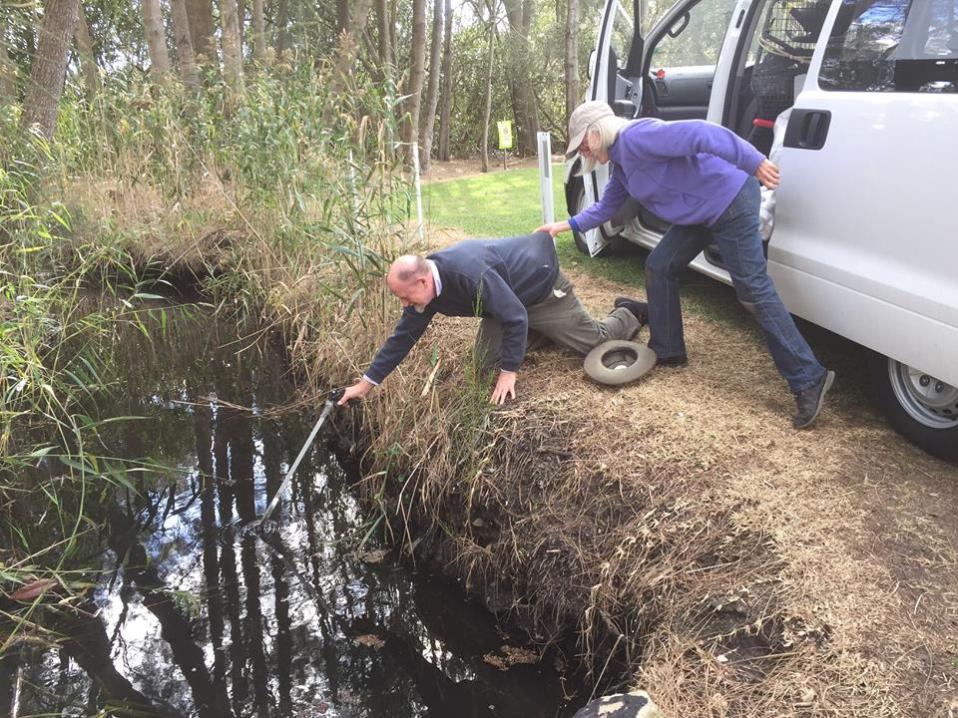


Pittwater Natural Heritage Association Membership Application
PNHA aims to raise awareness of the conservation value of the natural heritage of the Pittwater local government area of Sydney, and of the threats to its sustainability; to foster individual and community responsibility for caring for this natural heritage; to seek and manage funds for expenditure on achieving these objectives.
Membership is open to all who support these aims.
Important: The PNHA membership year is July 1st to June 30. Renewals fall due on 1st July each year.Membership lapses if not renewed by the end of September.
Membership of our email group allows you to get PNHA newsletters, information on important local issues, upcoming events, and campaigns.Membership is $20 or $10 for pensioner/student
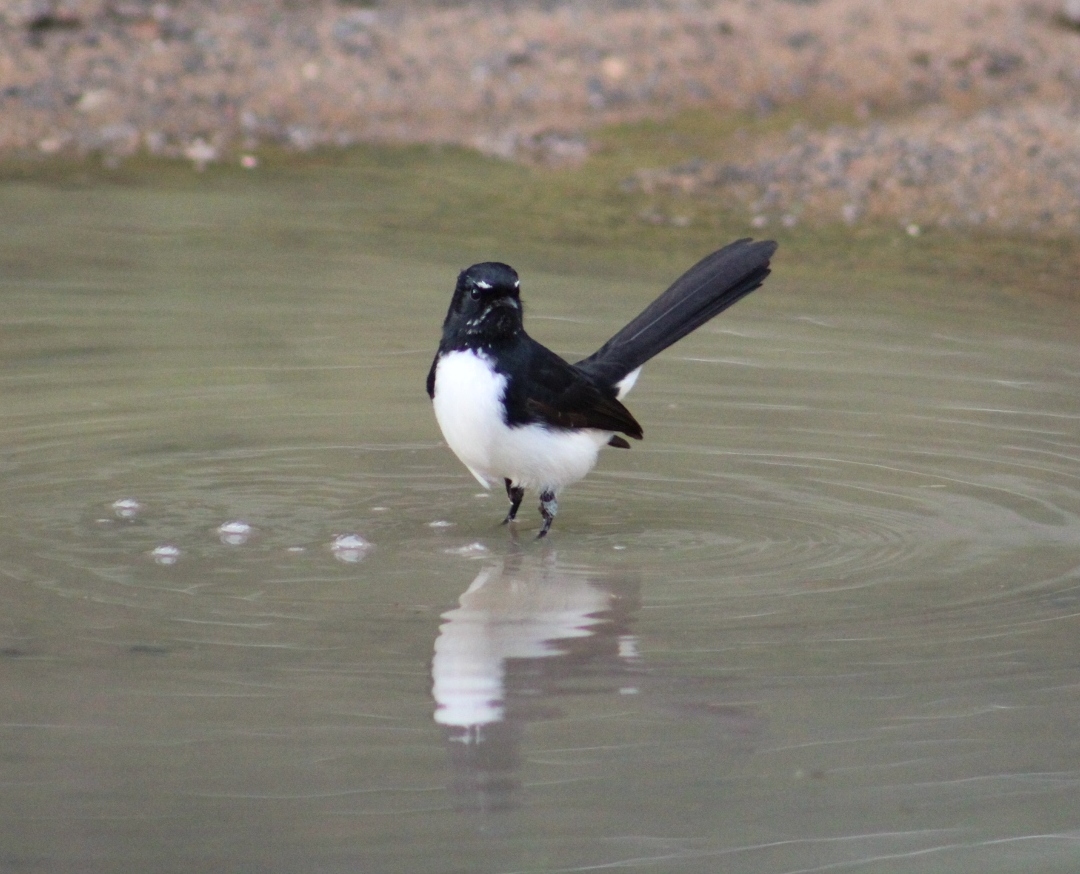
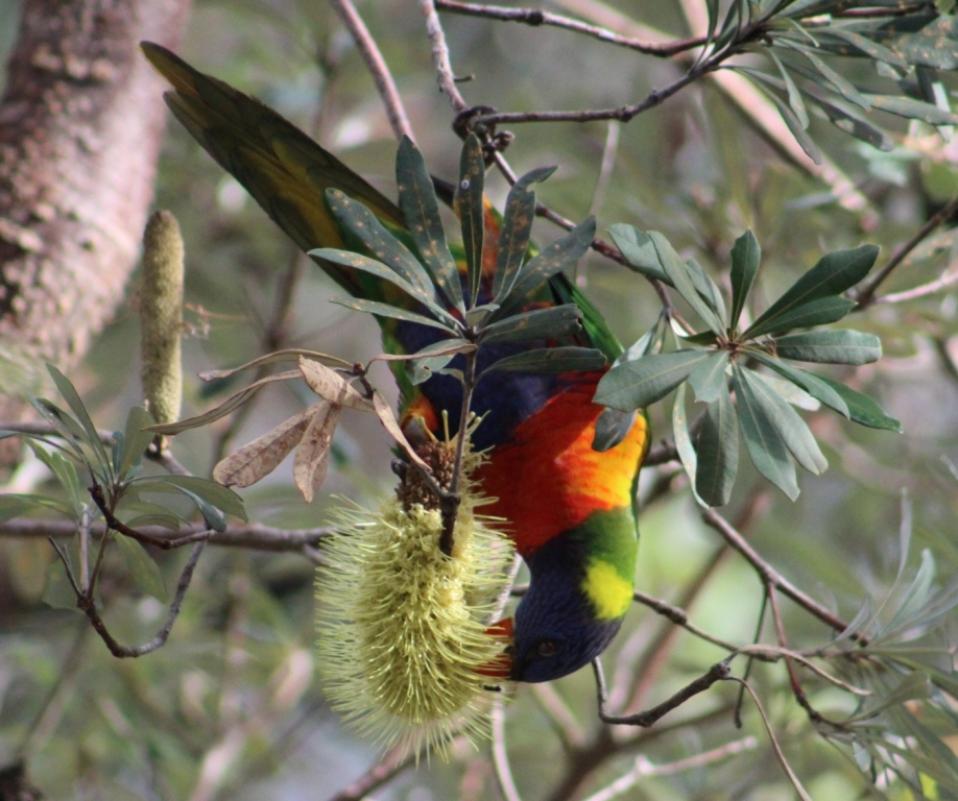
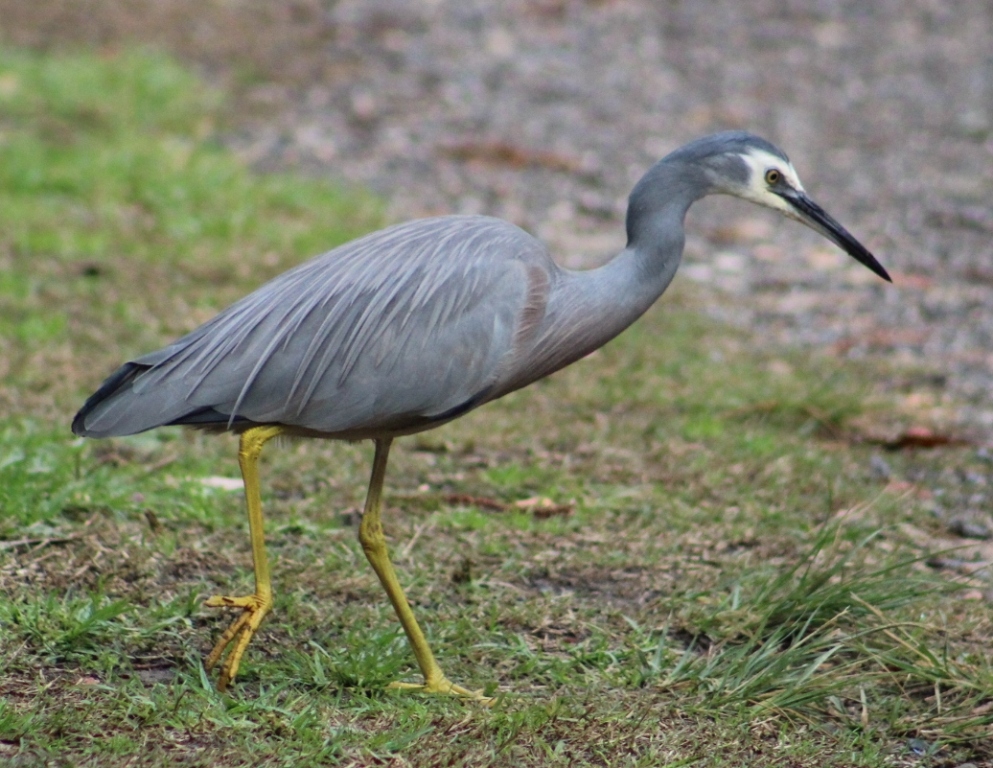
Willie Wagtail (Rhipidura leucophrys), Rainbow Lorikeet (Trichoglossus moluccanus) and White-faced Heron (Egretta novaehollandiae) enjoying food the rains bring - Careel Creek track behind BHS June 27th, 2018.



Twentieth Year Of Rip Curl GromSearch Set To Get Underway
June 28th, 2018 By Surfing AustraliaKicking off on September 22nd in Jan Juc, Victoria, the 2018/19 Rip Curl GromSearch presented by Flight Centre is set for another epic year of high-level competition.
The Rip Curl GromSearch National Series presented by Flight Centre is a prestigious event series giving 16-and-under surfers a chance to compete against their nations’ best, and 2018 marks its 20th year running. One of the longest Junior Surfing Series in the world, it has become a crucial stepping-stone in the development of junior surfers.
The list of previous GromSearch winners illustrates the significant history of the series, with World Surf League (WSL) competitors Gabriel Medina (Brazil), Tyler Wright (Australia), Owen Wright (Australia), Matt Wilkinson (Australia), Jordy Smith (South Africa), Kolohe Andino (USA) and Sally Fitzgibbons (Australia) among the list of former competitors and GromSearch International Final Champions.
Working in conjunction with Surfing Australia, the Rip Curl GromSearch includes divisions in 16-and-under, 14-and-under and 12-and-under, for both boys and girls.
The Australian National series will feature five stops in the key surfing regions of Jan Juc (VIC), Newcastle (NSW), Trigg Beach (WA), Yorke Peninsula (SA) and the Sunshine Coast (QLD). Participants can look forward to activities, giveaways and the chance to meet surfers from all over the country at each event, as well as hone their skills in the water. Athletes will gain valuable experience with the same system of priority and judging used across all elite surfing events.
Two time WSL Women’s World Champion Tyler Wright recalls her time competing as a junior surfer in the GromSearch series. “It was such a cool opportunity to get to compete in different areas around Australia at such a young age. It was definitely the best way to prepare for competition on the QS and the CT, and it was a really fun environment too.”
The Australian series allows surfers from around the country to compete against their contemporaries in a fun and engaging environment. Each result in the five-event series is awarded points that count towards a surfer’s GromSearch National rating, giving participants across the country the opportunity to compare their performances against their peers.
After the last event in Queensland, the top-ranked surfers qualify for the Rip Curl GromSearch National Final (in their respective divisions), where they then compete for the chance to become the Australian GromSearch Champion. The National Champion then represents Australia at the Rip Curl GromSearch International Final, held at a new location around the globe each year, against the best junior surfers in each participating country.
Entry details, event format and further information on entry procedures will be available in the coming weeks.
Dates and locations for the 2018/19 GromSearch Series are:EVENT 1 – Jan Juc, VIC - Sept 22 – 24, 2018 EVENT 2 – Newcastle, NSW - Sept 29 – Oct 2, 2018EVENT 3 – Trigg Beach, WA - Oct 5 – 7, 2018EVENT 4 – Yorke Peninsula, SA - Oct 27 – 28, 2018EVENT 5 – Sunshine Coast, QLD - Dec 14 – 18, 2018National Final – Dates and location TBC
The 2018 Rip Curl GromSearch series is presented by FLIGHT CENTRE, with managing partner Surfing Australia.
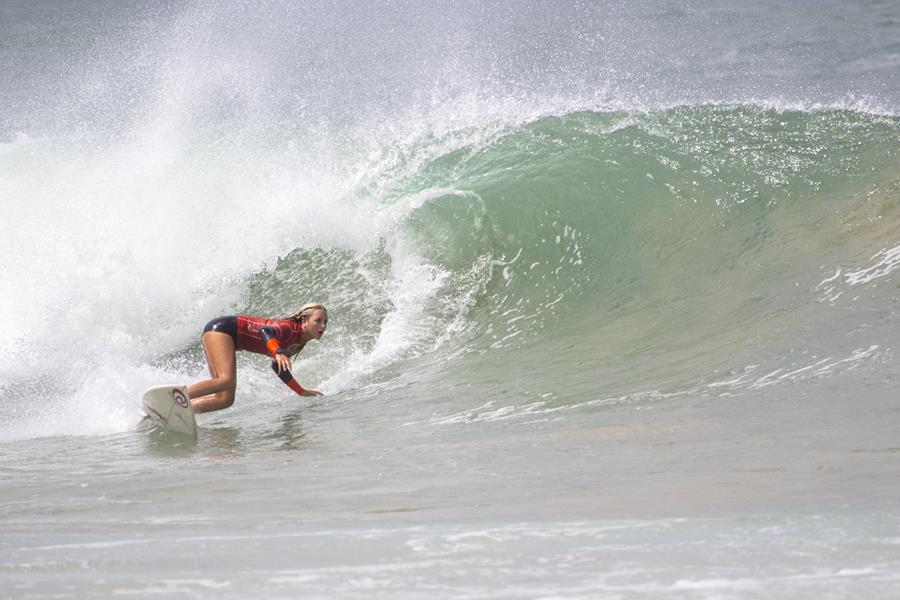
Photo - Sasha Baker coming off the bottom during last season's Rip Curl GromSearch Series. Photo credit: Ethan Smith / Surfing Australia / Nikon Australia

Chicken Wranglers Rule The Roost At Manly School
29 June 2018Students at Manly West Public School are learning the art of chicken wrangling in a program designed to support student wellbeing.
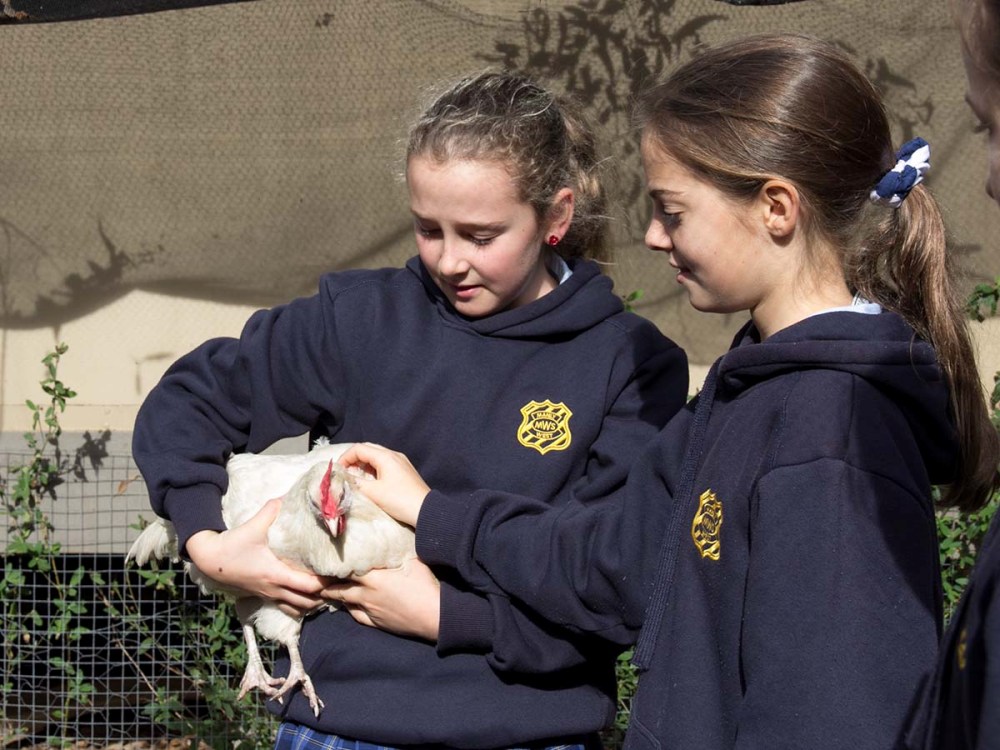
The Chicken Wranglers program supports student wellbeing at Manly West Public School.
Every lunchtime small groups of students, known as ‘Chicken Wranglers,’ descend on the school’s kitchen garden area to feed the chickens, check water levels and hunt for eggs.
The program was set up to link with the school’s broader student wellbeing program and encourages positive social behaviour and promotes a sense of belonging for students within the school community.
The Chicken Wranglers program has been running at Manly West Public School for almost five years.
Catherine Wyles, assistant principal, said the position of Chicken Wrangler was a highly sought-after role within the student body.
“The students show great enthusiasm for the program and look forward to their turn to participate,” she said.
“Our Year 2 students are looking forward to commencing training over the next few weeks.”
Being a Chicken Wrangler is a big responsibility with students in Year 2 and 3 trained by students in Year 5 and 6. The older students lead the younger students in a buddy system, which strengthens their confidence and leadership skills.
Once trained, students are presented with a badge to wear identifying them as an official ‘Chicken Wrangler’.
Seven chickens currently call Manly West Public home, roosting in a purpose-built chicken coop located within the expansive surrounds of the school’s Stephanie Alexander Kitchen Garden.
Fresh food scraps from the school canteen are used as chicken feed or garden compost and any eggs laid are offered to the canteen for school lunches.
Beyond the chicken coop, there are garden beds, a compost pit and worm farm, with Year 3 students responsible for planting and caring for vegetables, herbs and other plants. The garden is utilised during lessons across all areas of the curriculum and provides an immersive learning experience for the students.
Parents and community members often get involved with the garden and volunteer in tending to the chickens on weekends and during school holidays.
Story © State of New South Wales (Department of Education), 2018.

The Internet Past And Present: Vint Cerf In Conversation With UNSW's Toby Walsh
June 27, 2018By Lucy Carroll, UNSWThe 'father' of the internet identified threats to equal access for everyone during a conversation before a keen audience at UNSW.
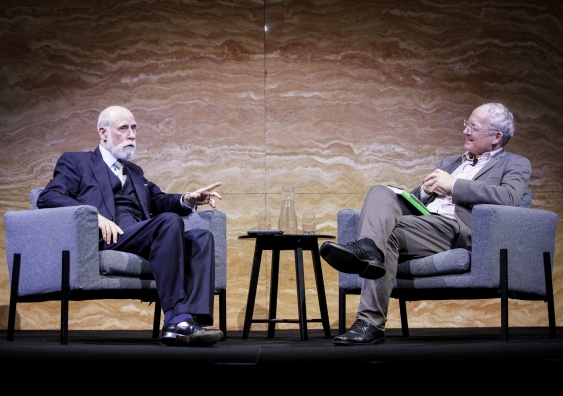
Vint Cerf, chief internet evangelist for Google, in conversation with UNSW Scientia Professor Toby Walsh. Photo: Ken Leanfore
A “digital dark age” is looming unless a sophisticated regime for curating, preserving and accessing our data is established, the ‘father of the internet’, Vint Cerf, told a packed audience at UNSW Sydney today.
Academics, students and researchers filled Leighton Hall at UNSW to hear Mr Cerf, Google's chief internet evangelist, in conversation with UNSW Scientia Professor of Artificial Intelligence, Toby Walsh.
The event was held in partnership by UNSW Engineering and Google, and the pair spoke about the evolution and future of the internet, the Internet of Things and the challenges of digital security. Mr Cerf is the the co-designer, with Bob Kahn, of the TCP/IP protocols, the underlying communication language and the architecture of the internet.
Introducing Mr Cerf, UNSW Dean of Science Emma Johnston AO said: “In the ‘exploration of information’, Vint Cerf is one of the world’s great explorers. He co-invented the architecture and basic protocols on the internet. We are so fortunate today to hear from an innovator, a pioneer, an explorer, and a leader who has also given back.” Professor Johnston highlighted the significant impact Mr Cerf has had on the world, largely because of decisions he and others made decades ago.
“The age of innovation that the world is experiencing now across so many fronts is a result of the ‘permissionless innovation’ that he and so many others were part of,” said Professor Johnston.
Mr Cerf discussed the early evolution of the internet, including the Advanced Research Projects Agency Network (ARPANET), the early packet switching network that linked many universities and research centres and became the technical foundation of the internet.
According to Mr Cerf, this was called “internetworking … but it was too long, so by December 1974 it became 'the internet'.”
“The internet was initially academic and military communities – with no commercial traffic. I wanted to find a way to break that barrier … By the mid-1990s I remember being astonished as the world wide web began to take hold that people had knowledge they wanted to share with other people. They weren’t even asking to be compensated, they just knew it would be useful to other people.”
The wealth of information available eventually became such that “no one could find anything … That’s when we saw the development of search engines, such as Yahoo and Google, which came out of Stanford University.”
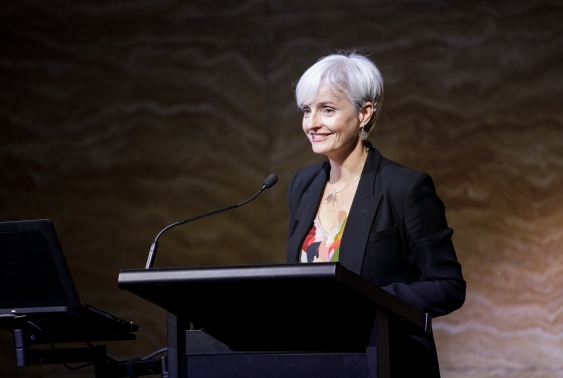
Professor Emma Johnston, Dean of Science at UNSW Sydney, introducing Vint Cerf. Photo: Ken Leanfore
Mr Cerf warned the audience about the ongoing challenges of net neutrality, the idea that the internet must be kept open and not charged differently by user or content.
“Net neutrality is about preventing anti-competitive actions by internet service providers. At the moment there is no protection for anti-competitive behaviour. We must preserve basic net neutrality laws but we have a Congress that is having trouble passing legislation.”
Cerf drew attention to the complications of the rise of digital media and of the forthcoming “digital dark age”.
“We have a big problem – I call it the digital dark age – in that we don’t curate our digital content with much care until we realise its too late. So I’m a big fan of trying to create and preserve data, to assure ourselves that digital content can be moved from one medium to another – that we are able to preserve software. Creating a sophisticated regime for curating, preserving and accessing our data is just as important as preserving the original bits of data.”
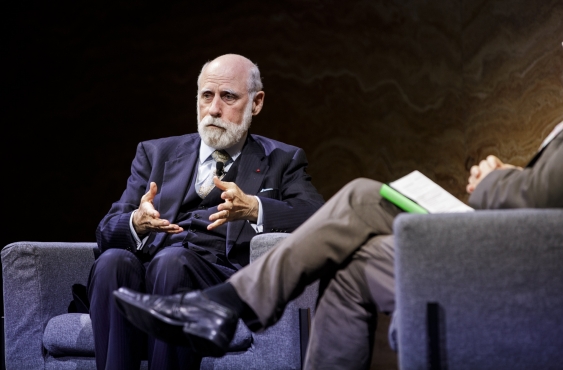
'Father of the internet' Vint Cerf at UNSW. Photo: Ken Leanfore



Wollemi Pines Sprout Seeds Of Success
June 24, 2018: NSW Office of Environment & HeritageAn ambitious project to better preserve the so called "dinosaur tree" – the Wollemi Pine – has blossomed and is sprouting in a secret location."There are only 4 strands of the rare pine growing in remote canyons, so the establishment of a flourishing "insurance population" is a real win for the environment," Environment Minister Gabrielle Upton said.
"The top-secret insurance population is now naturally producing cones and seeds, marking an exciting new step towards securing the survival of this ancient iconic plant.
"Creating a self-sustaining insurance population will ultimately boost numbers to secure species in the wild.
"The NSW Government invested almost $200,000 under its Saving our Species (SoS) Program towards securing the Wollemi Pine.
"It's one of the world's oldest and rarest plants from the time of the dinosaurs and there are less than 100 trees left in the wild," Ms Upton said.
"It's critically endangered in NSW and an Iconic Species under the SoS program, so these extremely positive early results are a real win for an extremely dedicated team of botanists and scientists," Ms Upton said.
Dr Cathy Offord, Principal Research Scientist at The Royal Botanic Garden Sydney who has been studying the Wollemi Pine since its discovery in 1994, says the insurance plantation is doing better than those growing in the wild.
"Some 83% of the insurance Wollemi pines are surviving and have increased in size by up to 37% making them mature enough to produce potentially viable seed much earlier than expected," Dr Offord said.
"We've now collected around 60 viable seeds which are being used to find the best way for them to grow on their own.
Dr Heidi Zimmer, Senior Scientist at the Office of Environment and Heritage says the production of cones indicates very positive results for the population and the species as a whole.
"It means we've got the science right and there is now a strong possibility that this insurance population may become self-sustaining."
BackgroundThe Wollemi Pine translocation is a collaboration between NSW Office of Environment and Heritage, The Royal Botanic Garden Sydney, National Parks and Wildlife Service the University of Melbourne (UoM) and Western Sydney University (WSU). Conservation of the Wollemi Pine is funded by the NSW Government's Saving our Species (SoS) program which aims to reverse a decline in the number of threatened species in NSW.
In September 1994 David Noble, an officer with the NSW National Parks and Wildlife Service, discovered what we now call Wollemia nobilis or the Wollemi Pine. The Wollemi pine (or a very similar relative) was previously known from fossils, and so the term "dinosaur tree" was coined. This tree was thought to have evolved 200 million years ago, disappearing from the fossil record (pollen) 2 million years ago. Because of its uniqueness, the Wollemi pine was a new species in a new genus.
Four stands of wild Wollemi Pines are found within a few remote canyons in the Blue Mountains, so the risk of losing the entire wild population in a single catastrophic event, like a fire or a disease outbreak is high. Establishment of a new 'insurance' population some distance from the original population reduces this risk. In August 2012, 191 Wollemi Pines were planted at a new site. This translocation site was chosen because it matched the warm temperate rainforest community characteristic of the wild site, and had land tenure that was secure in the long-term.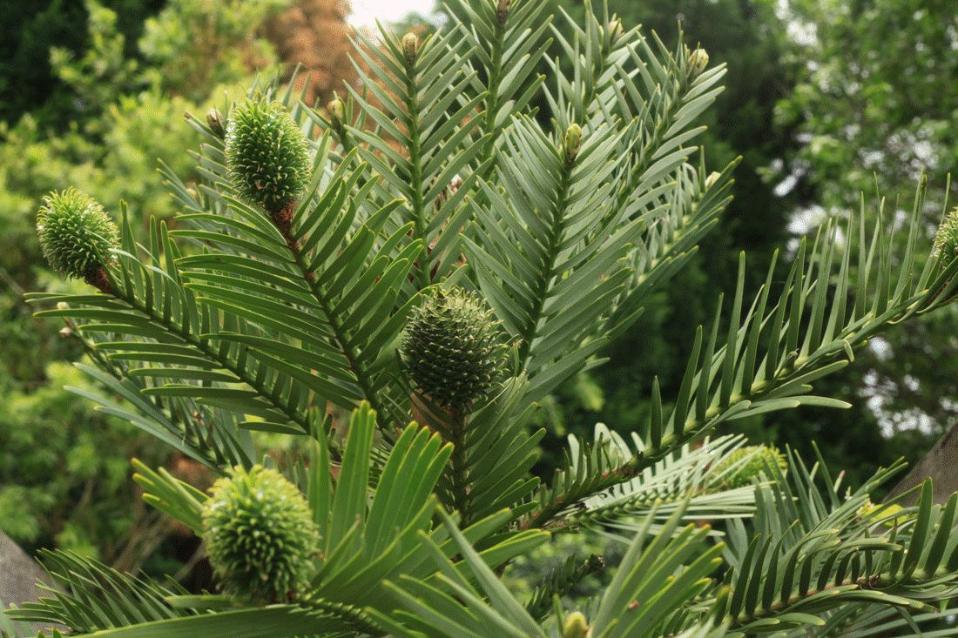 The Wollemi Pine - photo by OEH
The Wollemi Pine - photo by OEH

360º Video From Eagle In Flight Over The Dolomite Mountains
Rotate the camera with your mouse to fully enjoy the magnificent flight of this eagle on the Dolomites
Powerful Owl Release
March 18, 2018: Avalon Preservation AssociationPNHA's Jacqui Marlow has advised that a Powerful Owl chick has been released in Plateau Park following its recuperation in Taronga Park.
If you see it there being harassed, or even if you see it at all, can you please phone her on 0458 194 127.
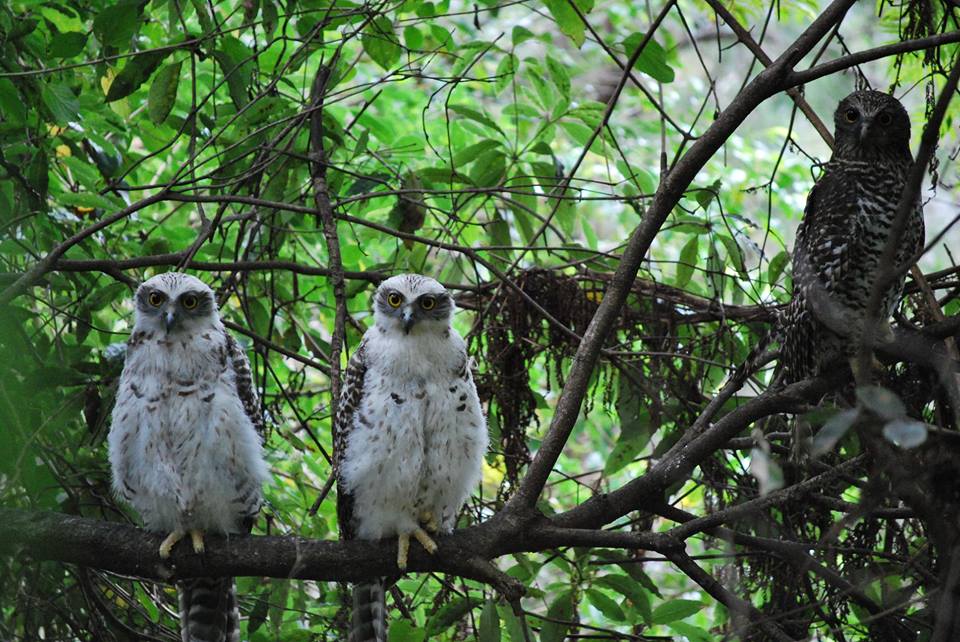
Powerful owl family - photo courtesy PNHA

ORRCA Thank You
To our ORRCA members and friends,
This is just a brief message to say 'thank you' so much to those who participated in yesterday’s 19th annual ORRCA Census Day. We hope you enjoyed an exciting fun time out watching the great Whales migrate up our coastline.
From all reports, it was one of our best years since the ORRCA Census started back in 2000. While whale sighting numbers continue to come in over the coming days, we can confirm we had many more members out and about and lots of media interest this year!
If you haven’t already, here is a final request, could you please report your findings and your log sheets back to ORRCA via emailorrca@orrca.org.au
All the final updates, news, fun, stories and photos from Sunday will be shared in our next member newsletter 'Flipper & Flukes' (Winter issue).
Once again, thank you for your ongoing support!SAVE the DATE: The next ORRCA Annual Whale Census Day is proposed for 30th June 2019 (next year)
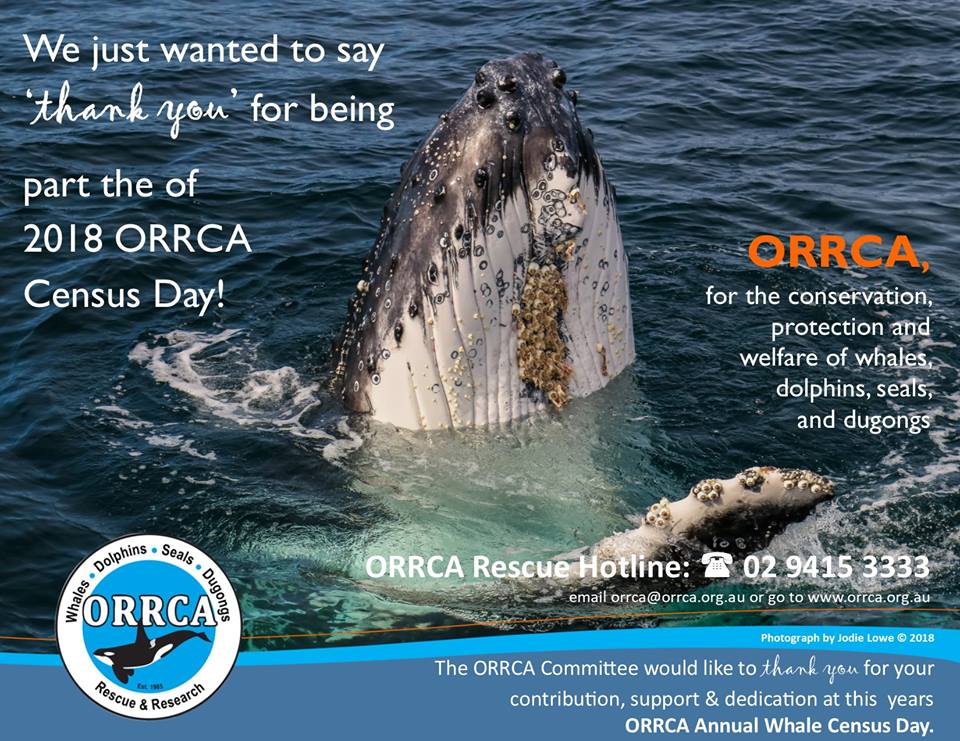

9 Million More Ways To Save Threatened Species
Tuesday June 26, 2018: NSW Minister for the Environment, The Hon. Gabrielle Upton
The NSW Government has put $9 million on the table to deliver more local projects to save threatened species.
"This is the first time this scale of funding has been available to the community from the Saving our Species (SOS) program," Environment Minister Gabrielle Upton said.
"The new grants program is designed to maximise the number of species that can be secured in the wild under the NSW Government's Saving our Species initiative.
"Saving our Species is investing $100 million over five years to secure populations of threatened species in the wild. Projects are currently in place for some 350 species. Applications open today and I encourage groups to apply for funding for local projects," Ms Upton said.
"By creating long-term partnerships between the NSW Government, community groups and other organisations, more threatened plants and animals can be managed and supported. All applicants are strongly encouraged to develop and deliver projects with other collaborating partners."
Minister Upton announced the grant funding at a function for the Foundation for National Parks and Wildlife held in Manly today.
"This grant is a tremendous opportunity for community groups and organisations to identify a threatened or iconic species and seek shared funding for a project," said the Member for Manly, James Griffin.
"Here in Manly, native animals such as the Long Nosed Potoroo on North Head have benefitted from Save our Species funded programs.
"It's a win for the community, a win for the environment and, most importantly, it's a win for animals facing the threat of extinction," he said.
Under the program individual grants of up to $350,000 are available for projects that will run for 7 years and will require a contribution from the successful organisation and project partners.
Applications are open from 26 June – 13 August 2018.
More information and forms on the: Saving Our Species Contestable Grants Program 2018 webpage
Tuesday June 26, 2018: NSW Minister for the Environment, The Hon. Gabrielle Upton
The NSW Government has put $9 million on the table to deliver more local projects to save threatened species.
"This is the first time this scale of funding has been available to the community from the Saving our Species (SOS) program," Environment Minister Gabrielle Upton said.
"The new grants program is designed to maximise the number of species that can be secured in the wild under the NSW Government's Saving our Species initiative.
"Saving our Species is investing $100 million over five years to secure populations of threatened species in the wild. Projects are currently in place for some 350 species. Applications open today and I encourage groups to apply for funding for local projects," Ms Upton said.
"By creating long-term partnerships between the NSW Government, community groups and other organisations, more threatened plants and animals can be managed and supported. All applicants are strongly encouraged to develop and deliver projects with other collaborating partners."
Minister Upton announced the grant funding at a function for the Foundation for National Parks and Wildlife held in Manly today.
"This grant is a tremendous opportunity for community groups and organisations to identify a threatened or iconic species and seek shared funding for a project," said the Member for Manly, James Griffin.
"Here in Manly, native animals such as the Long Nosed Potoroo on North Head have benefitted from Save our Species funded programs.
"It's a win for the community, a win for the environment and, most importantly, it's a win for animals facing the threat of extinction," he said.
Under the program individual grants of up to $350,000 are available for projects that will run for 7 years and will require a contribution from the successful organisation and project partners.
Applications are open from 26 June – 13 August 2018.
More information and forms on the: Saving Our Species Contestable Grants Program 2018 webpage
PNHA Newsletter 76
Read about wild life in the 'Burbs - How to identify local owl calls, the Wing Tag project and PNHA's latest campaign news.
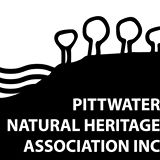

Antarctic Experts To Meet In Hobart In 2020
June 24, 2018: Department of the Environment and Energy, Australian Antarctic DivisionHobart will host a gathering of more than 1000 Antarctic scientists and polar operations experts when the Antarctic gateway city hosts two key international events in August 2020.
The Scientific Committee on Antarctic Research (SCAR) will hold its Open Science Conference, Business and Delegates’ Meetings and the Council of Managers of National Antarctic Programs (COMNAP) will have its Annual General Meeting.
This year’s SCAR meeting in Davos, Switzerland concluded today.
The Division’s Chief Scientist Dr Gwen Fenton and Australia’s delegate to SCAR was in Davos to officially invite participants to attend the 2020 meeting in Hobart.
“SCAR delivers major international scientific collaborative research in Antarctica and the Southern Ocean and the Committee also provides independent scientific advice to the Antarctic Treaty parties,” Dr Fenton said.
“The 2020 meetings will offer Hobart an opportunity to showcase itself as the premier gateway to East Antarctica, the home of the Australian Antarctic Program and world-class Antarctic science.”
Australia’s new icebreaker, RSV Nuyina, is due to arrive in Hobart in mid-2020 and tours of the state-of-the art scientific platform and resupply vessel will be included in the program of both events.
The bid for SCAR was led by the Australian Academy of Science’s National Committee for Antarctic Research (NCAR) in partnership with the Australian Antarctic Division and Tasmanian Government.
SCAR President, Professor Steven Chown of Monash University, said Hobart is an ideal place for SCAR to meet with its critical mass of Antarctic researchers.
“SCAR is delighted to be meeting in Hobart in 2020, where our members will announce a range of fundamental and important Antarctic research outcomes,” Professor Chown said.
“Australia has supported SCAR throughout its 60 year history and its scientists have had a tremendous influence on what we know about Antarctica and the Southern Ocean and their global significance.”
$9.5 Million To Blunt The Chinese Sword
25 June 2018: EPA
The NSW Government is providing $9.5 million for better waste recycling projects to counter the effects of China’s National Sword policy, Environment Minister Gabrielle Upton announced today.
"China’s enforcement of its National Sword policy restricts the types of recycled material China will accept," Ms Upton said.
"As China is the largest importer of recyclable products from Australia, this policy threatens NSW’s kerbside recycling system and the options for recycled material currently produced in NSW."
Local councils should team up with industry to seek funding to improve and strengthen recycling in NSW, Ms Upton said.
"A new grant, called the Product Improvement Program, provides $4.5 million for projects that reduce the amount of unrecyclable material left at the end of the recycling process.
"Another $5 million is available for programs that identify new uses for recyclable materials and increase the production and use of recycled products.
This includes $2.5 million under the Civil Construction Market Program and $2.5 million under the Circulate Program, she said.
"The NSW Government has consulted with industry and local government to develop the grant programs and I encourage the state’s recycling sector to apply for this funding."
Ms Upton said the NSW Government is committed to working with councils and industry to improve and strengthen our recycling systems in NSW.
"An inter-government taskforce has been established to urgently progress a longer-term response to National Sword in partnership with industry and councils."
BackgroundThe support package is being funded by the Waste Less, Recycle More initiative and provides a range of short, medium and long-term initiatives to ensure kerbside recycling continues and to promote industry innovation, she said.
Applications are now open for the following grants through the NSW Environment Protection Authority:- Product Improvement Program, $4.5 million
- Civil Construction Market Program, $2.5 million
- Circulate Program, $2.5 million
The NSW EPA is also working with councils to deliver the rest of the funding announced as part of the support package through the Better Waste and Recycling Fund and the Recycling Relief Fund.
This funding aims to enable councils to off-set some extra costs associated with kerbside recycling collections, improve council tendering processes to increase the production and use of recycled products and fund community education initiatives to reduce kerbside recycling contamination.
A summary of the funding package and updated guidelines is available at: https://www.epa.nsw.gov.au/your-environment/recycling-and-reuse/response-to-china-national-sword.
- Product Improvement Program, $4.5 million
- Civil Construction Market Program, $2.5 million
- Circulate Program, $2.5 million
Minister Upton Recycles Funding Announcements
June 26, 2018: By LGNSWA so-called "new" grant to councils hard hit by the Chinese National Sword recycling crisis was actually just the same funding that had already been announced, Local Government NSW (LGNSW) said today.
"It looks like Local Government and Environment Minister Gabrielle Upton is having a bit of a recycling crisis of her own," LGNSW President Linda Scott said today.
"The Minister's latest announcement boasts that her $9.5 million package will 'blunt the Chinese Sword' - but it's just part of the $47.5 million rescue package she announced back in March.
"And even then the funding was recycled - it was simply diverted from funds already allocated to councils to better manage waste across NSW.
"Councils had already been granted that funding under the Waste Less Recycle More Program, and had factored it into their existing recycling and waste management budgets.
"But what is really disappointing is that the money was contributed by councils to the NSW Government as part of the waste levy.
"The NSW Government collected $659 million in waste levies in 2016/17, yet only 18% of the waste levies paid by local government were returned to local government.
"It's even more disappointing when you look at the record NSW surplus, and the Government's decision to spend billions of dollars on sporting stadiums in Sydney."
China's National Sword Policy applies to the importation of recycling materials from Australia and all other countries. It applies a strict contamination rate on recyclables, which requires a more detailed and expensive sorting process than that used by most recycling companies in Australia.
The one-off funding package announced by the Minister in March was designed to:- Enable councils to offset some of the costs associated with kerbside recycling collections
- Improve tendering processes to increase the production and use of recycled product
- Fund community education initiatives to reduce kerbside recycling contamination levels
It included today's announcement of $9.5 million, designed to assist industry and local government to co-invest in infrastructure projects, identify new uses for recyclable materials, improve the quality of recycled products, and reduce the amount of unrecyclable material left at the end of the process.
Clr Scott said councils were already moving to create a circular economy where waste becomes the input for new products, and consumers choose to buy products that have recycled content, for a more sustainable future.
- Enable councils to offset some of the costs associated with kerbside recycling collections
- Improve tendering processes to increase the production and use of recycled product
- Fund community education initiatives to reduce kerbside recycling contamination levels
Scientists Calculate Impact Of China's Ban On Plastic Waste Imports
June 21, 2018: University of GeorgiaWhile recycling is often touted as the solution to the large-scale production of plastic waste, upwards of half of the plastic waste intended for recycling is exported from higher income countries to other nations, with China historically taking the largest share.
But in 2017, China passed the "National Sword" policy, which permanently bans the import of non-industrial plastic waste as of January 2018. Now, scientists from the University of Georgia have calculated the potential global impact of this legislation and how it might affect efforts to reduce the amount of plastic waste entering the world's landfills and natural environment.
They published their findings today in the journal Science Advances.
"We know from our previous studies that only 9 percent of all plastic ever produced has been recycled, and the majority of it ends up in landfills or the natural environment," said Jenna Jambeck, associate professor in UGA's College of engineering and co-author of the study. "About 111 million metric tons of plastic waste is going to be displaced because of the import ban through 2030, so we're going to have to develop more robust recycling programs domestically and rethink the use and design of plastic products if we want to deal with this waste responsibly."
Global annual imports and exports of plastic waste skyrocketed in 1993, growing by about 800 percent through 2016.
Since reporting began in 1992, China has accepted about 106 million metric tons of plastic waste, which accounts for nearly half of the world's plastic waste imports. China and Hong Kong have imported more than 72 percent of all plastic waste, but most of the waste that enters Hong Kong -- about 63 percent -- is exported to China.
High income countries in Europe, Asia and the Americas account for more than 85 percent of all global plastic waste exports. Taken collectively, the European Union is the top exporter.
"Plastic waste was once a fairly profitable business for China, because they could use or resell the recycled plastic waste," said Amy Brooks, a doctoral student in UGA's College of Engineering and lead author of the paper. "But a lot of the plastic China received in recent years was poor quality, and it became difficult to turn a profit. China is also producing more plastic waste domestically, so it doesn't have to rely on other nations for waste."
For exporters, cheap processing fees in China meant that shipping waste overseas was less expensive than transporting the materials domestically via truck or rail, said Brooks.
"It's hard to predict what will happen to the plastic waste that was once destined for Chinese processing facilities," said Jambeck. "Some of it could be diverted to other countries, but most of them lack the infrastructure to manage their own waste let alone the waste produced by the rest of the world."
The import of plastic waste to China contributed an additional 10 to 13 percent of plastic waste on top of what they were already having a difficult time managing because of rapid economic growth before the import ban took effect, Jambeck said.
"Without bold new ideas and system-wide changes, even the relatively low current recycling rates will no longer be met, and our previously recycled materials could now end up in landfills," Jambeck said.Amy L. Brooks, Shunli Wang, Jenna R. Jambeck. The Chinese import ban and its impact on global plastic waste trade. Science Advances, 2018; 4 (6): eaat0131 DOI:10.1126/sciadv.aat0131
Sydney Metro Northwest: Proposed SEPP Amendment
June 8, 2018: NSW Department of PlanningYou are invited to have your say on a proposed amendment to the State Environmental Planning Policy (State and Regional Development) 2011 for the development of government-owned land adjoining the Sydney Metro Northwest corridor.
The proposed amendment to the State and Regional Development SEPP aims to ensure a state-led, consistent and transparent planning pathway for the development of government land within the eight station precincts along Australia’s largest public transport infrastructure project; the $8.3 billion Sydney Metro Northwest.
Outlined in the consultation paper, the proposed amendment nominates the Minister for Planning as the consent authority for future development on identified government-owned land, if the development meets the criteria of State Significant Development.
State Significant Development must meet one or more of the following criteria: - a principal subdivision establishing major lots or public domain areas - the creation of new roadways and associated works - has a capital investment value of more than $30 million.Exhibition Commences 08/06/2018Exhibition Concludes 06/07/2018
NOPSEMA - Open For Comment: Environment Plan Assessment Guidance
Overview
Since 2012, NOPSEMA has developed a series of guidance documents to inform and assist stakeholders in understanding NOPSEMA’s decision-making on environment plans and advise titleholders on how to interpret and meet the requirements of the Offshore Petroleum and Greenhouse Gas Storage (Environment) Regulations 2009 (Environment Regulations). This guidance is comprised of a number of different document types, including:- policies that provide NOPSEMA’s interpretation of legislative provisions
- guidelines that provide NOPSEMA guidance on how to meet legislative requirements
- guidance notes that provide NOPSEMA’s expectations on an environmental management topic
- information papers that provide further information, background and practices to foster improved environmental management outcomes.
In November 2017, the Minister for Resources and Northern Australia, Senator the Hon Matthew Canavan, announced a series of changes to improve the transparency of offshore petroleum environmental management. The Department of Industry, Innovation and Science has commenced work to develop the necessary regulatory amendments.
In preparation for these changes, NOPSEMA is now seeking feedback on its guidance documents relating to the assessment of environment plan.
Guidance open for commentNOPSEMA is seeking comment on the following key documents:PL1347 - Environment plan assessment - Rev 6 - April 2017 (PDF 534KB)GN1344 - Environment plan content requirements - Rev 3 - April2016 (PDF 1.1MB)GL1721 - Environment plan decision making - Rev 5 - June 2018(PDF 342KB)GL1566 - Environment plan summaries - Rev 1 - July 2016 (PDF 196KB)IP1411 - Consultation requirements under the OPGGS Environment Regulations 2009 - Rev 2 - December 2014 (PDF 184KB)
Comments may also be provided on any other published environmental management guidance document on the Environment Resources page.
How to provide commentComments are to be provided by 20 July 2018 using theONLINE SURVEY. Enquiries should be directed toenvironment@nopsema.gov.au.
Next stepsNOPSEMA will consider the feedback received during the public comment period and may also conduct further consultation with stakeholders to address comments received. NOPSEMA will aim to publish a report by the end of 2018 to collate the comments received and provide a response on the merits of the feedback.
- policies that provide NOPSEMA’s interpretation of legislative provisions
- guidelines that provide NOPSEMA guidance on how to meet legislative requirements
- guidance notes that provide NOPSEMA’s expectations on an environmental management topic
- information papers that provide further information, background and practices to foster improved environmental management outcomes.
No Compromise: New Era For Aged Care Quality Compliance
June 30, 2018: The Hon Ken Wyatt AM, MP, Minister for Aged CareA new era of aged care quality and safety compliance begins on 1 July, as unannounced audits are rolled out across Australia’s almost 2,700 residential aged care homes.
Aged Care Minister Ken Wyatt AM said from tomorrow, homes would no longer be given notice of the date of their re-accreditation audit.
“There will be no compromise,” said Minister Wyatt. “Audit teams will arrive at any time, to monitor and ensure the provision of safe, quality care 365 days of the year.
“This is about certainty and confidence for older Australians and families whose loved ones are receiving care.
“Statistics show that, overwhelmingly, Australia’s aged care homes provide outstanding services but our focus must be on maintaining high standards across the board and at all times.”
Minister Wyatt said the Turnbull Government’s introduction of unannounced audits marked the beginning of a quantum shift in aged care quality compliance and customer-directed care.
“Work is advancing on Australia’s new, independent Aged Care Quality and Safety Commission, which begins operations on 1 January 2019,” said Minister Wyatt.
“The recent Federal Budget earmarked more than $32 million for the Commission to intensify compliance and strengthen risk profiling of aged care providers, with the aim of preventing care lapses before they occur.
“The Commission will also develop a Serious Incident Response Scheme, in consultation with the aged care sector.”
The Commission will combine the functions of the current Australian Aged Care Quality Agency, the Aged Care Complaints Commissioner and the aged care regulatory role of the Department of Health.
“The new re-accreditation audit regime builds on the existing system of unannounced inspections by the Quality Agency,” said Minister Wyatt.
“Since last July, the Agency has conducted almost 3,000 unannounced assessment visits on homes, targeting specific quality standard requirements, with nine homes losing their accreditation.”
To maintain their approval to receive Commonwealth funding, aged care homes must comply with four standards comprising 44 required outcomes, including the adequate provision of qualified staff, clinical care, nutrition, hygiene, dignity, privacy and security.
“During re-accreditation audits, aged care residents are also encouraged to provide feedback,” said Minister Wyatt.
“It is a requirement that the audit teams meet with at least 10 per cent of a home’s care recipients and conduct Consumer Experience Interviews with a minimum number of randomly sampled residents. The audits also include opportunities for family feedback.
“The results of these interviews are then published on the Quality Agency website, along with the outcomes of the audits.”
The enhanced audit system, the new Aged Care Quality and Safety Commission and the aged care comparison system were key recommendations of the Review of National Aged Care Quality Regulatory Processes which Minister Wyatt commissioned last year.
“The Turnbull Government stands with older Australians and their families, with aged care providers and with the sector’s 360,000 dedicated staff, in our shared commitment to quality care,” Minister Wyatt said.
Aged care accreditation and compliance decisions and resident feedback results are available at www.aacqa.gov.au.
NSW To Adopt Retirement Village Reforms
June 28, 2018: National Seniors
The NSW Government said this week it would implement the majority of reforms recommended in a report on the state’s retirement villages.
Better Regulation Minister Matt Kean said the reforms would be based on the outcomes of the recent state-wide inquiry into the sector, led by Kathryn Greiner.
“We strongly support the inquiry’s findings, and believe that our response will go a long way to putting the power back in the hands of retirees and their families,” Mr Kean said.
“These reforms will put consumers first, and see greater protections for residents through increased transparency, improved dispute resolution, and more certainty around costs.”
The package of reforms includes:- implementing a mandatory Code of Conduct to set the standard for retirement village operators and to stamp out unscrupulous behaviour;
- introducing strong transparency measures to improve disclosure of key contract terms, exit fees, and to drive greater competition in the sector;
- improved dispute resolution services for residents; and,
- measures to help clarify responsibilities with respect to ongoing maintenance costs.
The state government said it would also appoint a dedicated Retirement Village Ambassador to advocate on behalf of residents, and report back on key issues and consult with the sector on the potential for further reforms to improve the professionalism of operators and increase certainty of costs.
Minister for Ageing Tanya Davies said more than 55,000 NSW residents lived in retirement villages and the number was set to grow significantly due to the ageing population.
“We want residents to be able to live independent and fulfilling lives in their chosen retirement village, which is why it’s incredibly important we improve our laws to increase confidence in the sector,” Mrs Davies said.
The state government called the inquiry last year after a series of concerning reports about alleged misconduct in the sector.
The inquiry included extensive consultation with the public, key stakeholders and industry experts, received about 500 submissions, and more than 500 people attended state-wide community forums.
- implementing a mandatory Code of Conduct to set the standard for retirement village operators and to stamp out unscrupulous behaviour;
- introducing strong transparency measures to improve disclosure of key contract terms, exit fees, and to drive greater competition in the sector;
- improved dispute resolution services for residents; and,
- measures to help clarify responsibilities with respect to ongoing maintenance costs.
'The Ultimate Life'
Surfing in Australia during the 1960s, filmed by Russell Sheppard (Mona Vale) for his film 'The Ultimate Life' which was shot on Super 8 film. A few excerpts;
NSW Government Supports Stronger Mental Health Commission
AvPals Term 3 Courses 2018
- send emails
- buy and sell on eBay
- manage digital photographs
- produce spreadsheets
- write letters
- book tickets and holidays
- keep in touch with friends and family
- bank online
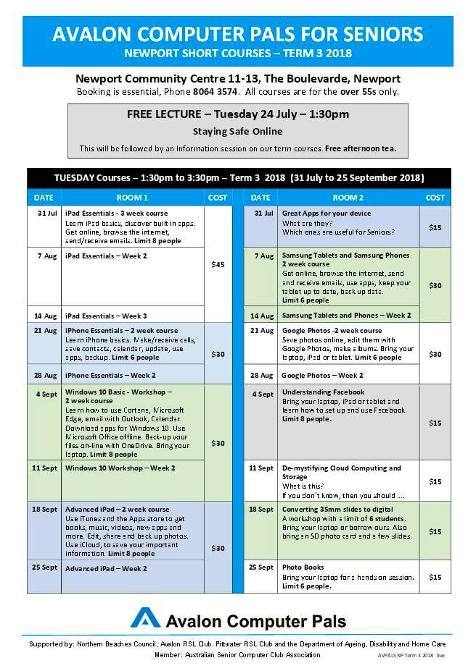
Calls Flood In For Advance Care Planning Advice
- Almost 50 per cent of people will not be able to make their own end-of-life medical decisions.
- Less than 15 per cent of Australians have documented their preferences in an Advanced Care Directive.
- One third of Australians will die before the age of 75.
- Most people die after a chronic illness, not a sudden event.
- Research shows advance care planning can reduce anxiety, depression and stress experienced by families who are more likely to be satisfied with their loved one’s care.

Wind Turbine Deliveries In NSW
2018 NSW Grandparent Of The Year Awards
$8 Million In Funding To Support Asthma Patients
Wind Turbine Deliveries In NSW
Federal Government's $33 Million Research Funding To Fight Rare Cancers And Rare Diseases
More Clues That Earth-Like Exoplanets Are Indeed Earth-Like
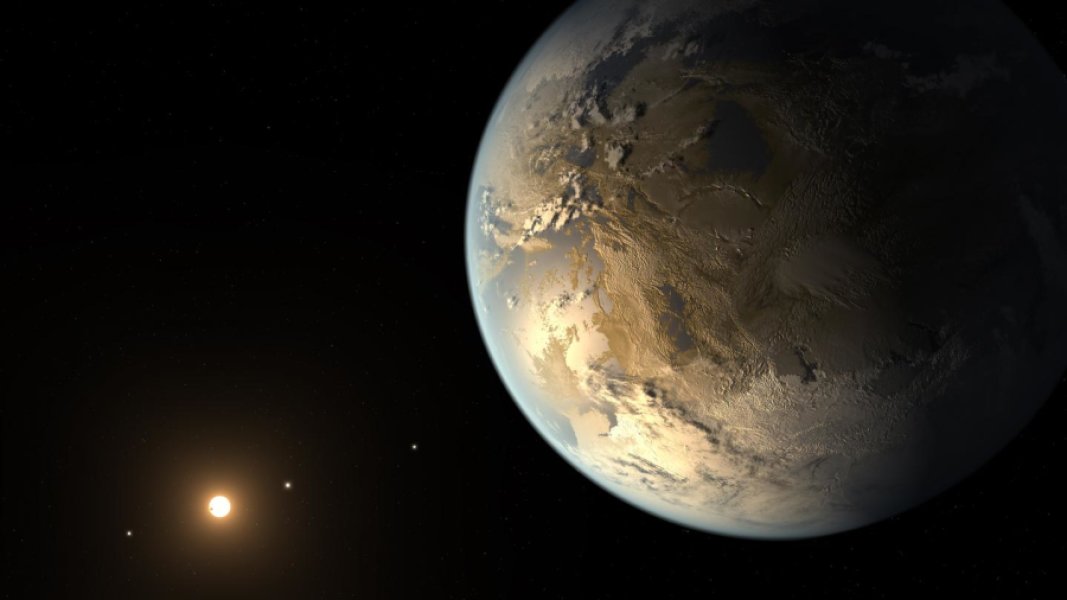
$31 Million Allocated For Mining Exploration Incentive
Research Finds ‘Counting Your Drinks’ Reduces Alcohol Consumption
Health And Safety Warning For Gas Heater Users
- the heater and gas supply are certified, properly installed and regularly serviced;
- the room where the heater is situated is well ventilated;
- the heater is turned off when you leave home or work; and,
- children are supervised around heaters.
$27 Million For Game-Changing Smart Farming Partnerships
- More than $27 million for 15 projects through round one of Smart Farming Partnerships grants
- Grants of up to $4 million are part of the $134 million Smart Farms Program
- Part of the $1.1 billion phase two of the National Landcare Program
Disclaimer: These articles are not intended to provide medical advice, diagnosis or treatment. Views expressed here do not necessarily reflect those of Pittwater Online News or its staff.